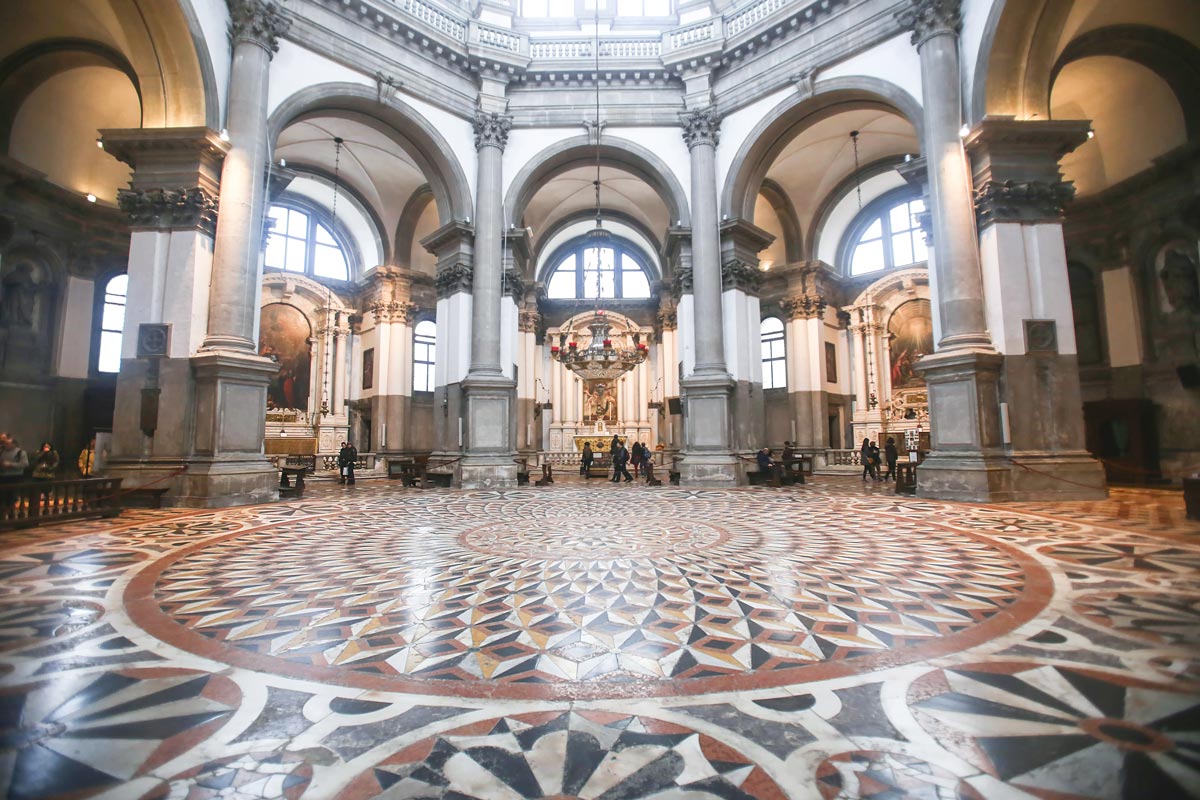n his and his wife’s many visits to Venice, Italy, Bob Harris was always in awe of one Catholic church near the entrance of the Grand Canal. In particular, the concrete floor specialist marveled at the precision involved with the hand-cut marble pieces that formed the unforgettable floors of the Santa Maria della Salute (Saint Mary of Health). After all, they were built centuries ago — from 1631-87 to be precise.
Prior to the Salute’s construction, the plague had ravaged the city in 1630-31 and wiped out about a third of the population. The Venetian Senate prayed to the virgin mother to intervene on Venice’s behalf and stop the pestilence from claiming more lives. The epidemic was stemmed and in return for prayers answered a magnificent Catholic basilica was to be erected in Mary’s honor — with no expense or effort spared.
A competition was held to design the “plague church” and Baldassare Longhena, an up-and-coming 26-year-old architect, was selected. He designed the crown-like, domed octagonal structure in the then-fashionable baroque style ringed with classic and Byzantine elements.
According to the Lonely Planet, “The lines of the building converge beneath the dome to form a vortex on the inlaid marble floors; some believe the black dot at the center radiates healing energy.”
When recreating the floor in their new training facility, “It was important for us to be respectful of the floor and try to capture all the same elements,” Harris says.
